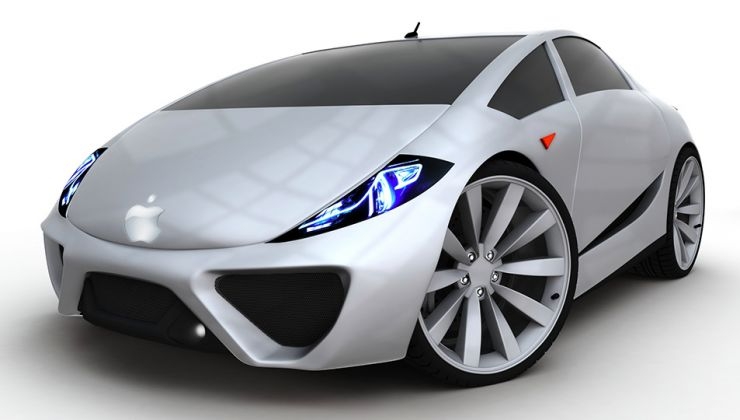
Although Apple has never spoken out and has never publicly stated that it is developing a car, its "Project Titan" has long been no secret. Not long ago, Apple’s California Vehicle Authority also revealed that Apple is preparing to start a test program for driverless cars. However, from the latest news, this plan seems to disappoint everyone.
According to foreign media reports, Apple's current car manufacturing project has encountered a lot of trouble, Apple has closed some of the driverless car project, but also cut off dozens of employees.
Of course, in view of the large amount of manpower and financial resources invested in the previous car construction projects (having not yet seen the product already invested $4.7 billion, compared with the Apple Watch R&D investment of $2 billion), Apple will not give up directly without People drive car R&D. According to informed sources, this layoff was only part of the restart of the car project. What Apple is doing is to develop software for driverless cars.
The Titan project started around 2014 and since then Apple has rapidly expanded its team size. Externally, Apple has recruited a large number of experts in battery technology and machine vision as well as senior practitioners in the automotive industry. Moreover, many employees within the company have been deployed to automotive projects. In just 18 months, the team has increased. More than 1,000 people arrived.
However, rapid expansion did not bring the desired results. Apple’s earliest plan was to launch the first electric car in 2020, but due to design and production reasons, Apple had to delay the launch date of this product. Without warning, Steve Zadesky, the head of Apple's auto project in January, suddenly announced that he had left the company and the project was hard hit.
Since Bob Mansfield returned to Apple to take charge of Apple's auto project, the team’s R&D direction has turned 180 degrees: Apple's Rover Program has changed from designing and manufacturing cars to R&D. The underlying technology needed to drive a car. In other words, it is very likely that Apple will launch software for driverless cars in the future instead of seeing a car that can be touched.
If so, then all previous rumors - the streamlined body, the life of 400-500 miles and the price of 75,000 US dollars - have all been crushed, and Apple will develop a software platform based on CarPlay.
It is understood that CarPlay, officially launched in March 2014, is already compatible with mainstream models such as Mercedes, BMW, Audi, Ford, Chevrolet, Honda and Volkswagen. Since CarPlay is based on iOS devices with a large number of user bases, ABIResearch had predicted that CarPlay will occupy 50% of the market in 2018. There is no doubt that this way of building an eco-sphere is much simpler than developing a model.
At present, Apple spokesman declined to comment.
Recommended reading:
Google and Apple-made cars, you will buy it? | New Driving
Not driverless, but Apple cars will come out in 2021?
Another move of Apple Auto, in-depth cooperation with Korean battery company
First, basic concepts
Solar Camera is a device that uses solar energy as the main or auxiliary energy to capture and record images. It usually includes components such as solar panels, energy storage devices (such as batteries), image sensors, lenses, processors, and communication modules.
Second, the working principle
Energy supply: The Solar Camera collects solar energy through solar panels on its top and converts it into electricity. This energy can be used directly for the operation of the equipment, or stored for a rainy day.
Image capture: The image sensor inside the device (such as CMOS or CCD) is responsible for capturing the image, and the lens is used to focus the light and project it onto the sensor.
Processing and storage: After the captured image is processed by the processor, it can be stored in the built-in memory of the device, or transmitted to a remote server or mobile device through a communication module.
Three, the main characteristics
Energy saving and environmental protection: The use of solar energy as an energy source reduces the dependence on traditional batteries, reducing energy consumption and environmental pollution.
Long life: In the case of sufficient light, the Solar Camera can continue to work without replacing the battery, improving the convenience and reliability of use.
Widely used: suitable for a variety of outdoor environments, such as monitoring, photography, scientific research and other fields, especially in remote areas or places that cannot access the power grid.
Intelligent functions: Some Solar cameras also have intelligent functions, such as remote monitoring, motion detection and alarm, humanoid detection and alarm, etc., which improves the safety and convenience of use.
Solar panel for camera,10000mah lifepo4 battery ,small solar energy system
Foshan Keylewatt Technology Co., LTD , https://www.keylewatt.com